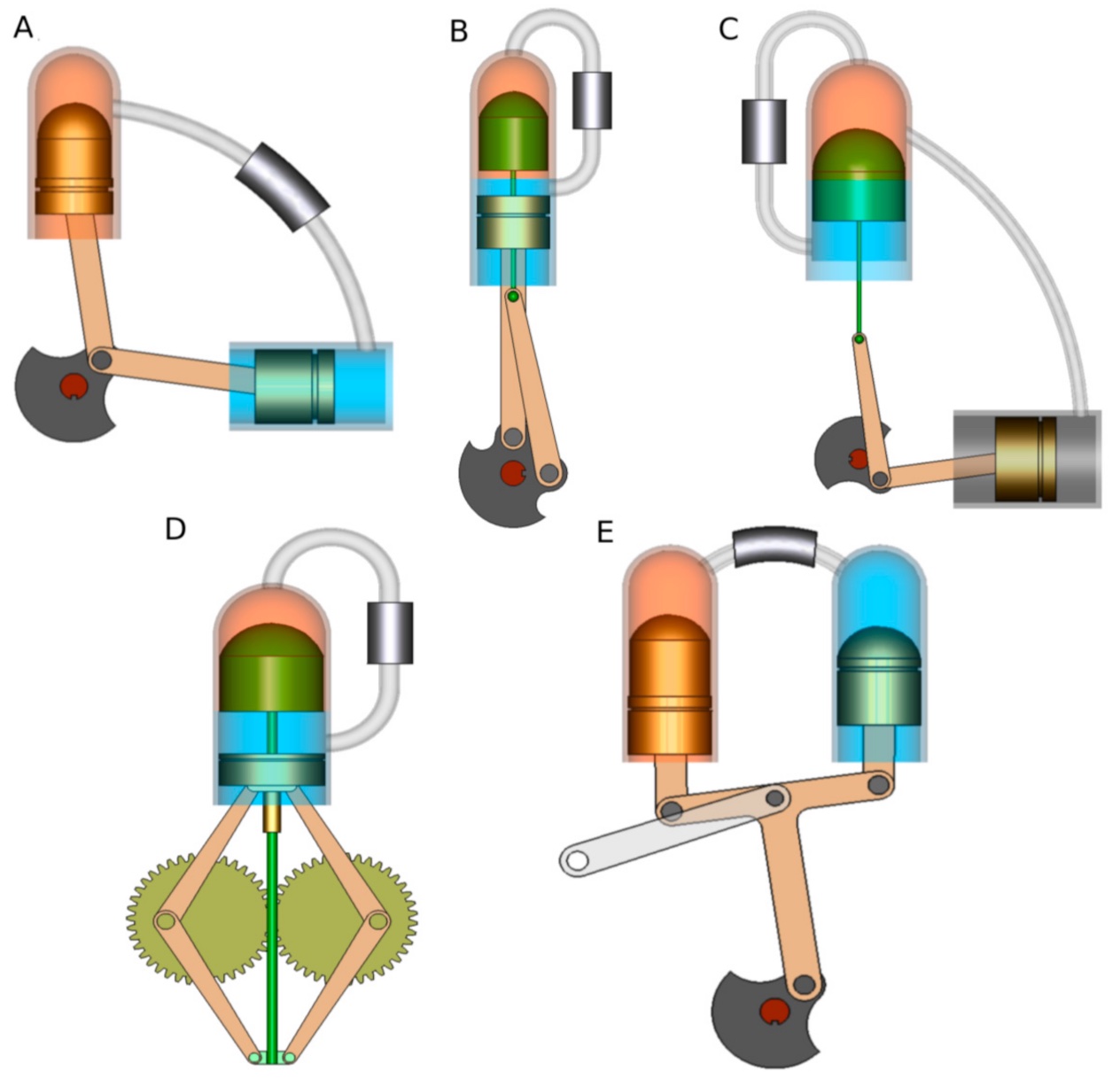
A Stirling engine is a heat engine that operates by cyclic compression and expansion of air or other gas (the working fluid) at different temperatures, such that there is a net conversion of heat energy to mechanical work. More specifically, the Stirling engine is a closed-cycle regenerative heat engine with a permanently gaseous working fluid. Closed-cycle, in this context, means a thermodynamic system in which the working fluid is permanently contained within the system, and regenerative describes the use of a specific type of internal heat exchanger and thermal store, known as the regenerator. The inclusion of a regenerator differentiates the Stirling engine from other closed cycle hot air engines.
Originally conceived in 1816 as an industrial prime mover to rival the steam engine, its practical use was largely confined to low-power domestic applications for over a century.
Stirling engines have a high efficiency compared to steam engines, being able to reach 50% efficiency. They are also capable of quiet operation and can use almost any heat source. The heat energy source is generated external to the Stirling engine rather than by internal combustion as with the Otto cycle or Diesel cycle engines. Because the Stirling engine is compatible with alternative and renewable energy sources it could become increasingly significant as the price of conventional fuels rises, and also in light of concerns such as depletion of oil supplies and climate change. This type of engine is currently generating interest as the core component of micro combined heat and power (CHP) units, in which it is more efficient and safer than a comparable steam engine. However, it has a low power-to-weight ratio, rendering it more suitable for use in static installations where space and weight are not at a premium. Wikipedia, Stirling Engine
There are several types or configurations of the Stirling Engine.
Start of sales of the 1000 watt Stirling module
Punctually from the middle of the year we will be launching a product that is unique in the world. It is a Stirling alternator capable of charging 24 volt battery packs at up to 40 amps. Under the name "Experimental Edition" we developed a modular system, the basic equipment of which consists of the proven 70 ccm Stirling engine with an integrated generator and a display starter rectifier module. Further expansion variants offer a high degree of flexibility, for example the equipment with a cooling unit and different interfaces for heat transfer.
https://frauscher-motors.com/start-of-sales-of-the-1000-watt-stirling-module/
See Also
8.32 - Electroacoustic Thermodynamic Transduction
Kepler's Three Laws
Boyles Law
Carnot Cycle
Chaos
Charles law
Cold
Compound Vibratory Engine
Continuous Motion
Cycle of Temperature
donkey engine
Dynaspheric Force
Energy from Vacuum
Engineering Scalar Forces
Father-Mother Principle
Figure 13.00 - Keelys Provisional Engine showing oil splatter from rotation
Figure 15.02 - Keelys Hydro-Pneumatic-Pulsating-Vacuo Engine operated with etheric vapor
Figure 19.05 - Globe Motor with Provisional Engine
First Law of Thermodynamics
Gay-Lussac law
heat engine
Heat
Hydro Vacuo Engine Patent
Keely - Electricity from Space
LAW OF THERMODYNAMICS
Law of Thermodynamics
Laws of Thermodynamics
Laws
MAGNETIC ENGINE - Snell
magnetic engine
Neutral Center Dynamics
New Concept - XII - Thermodynamic Misconception
Newton Laws of Motion
Nicolas Leonard Sadi Carnot
Part 18 - Mind as an Engineerable Force
Perpetual Motion
Power vs Energy
REGENERATIVE HEAT EXCHANGERS
Rhythmic Balanced Interchange
Robert Scragg Solar Reactor Engine
Russells Laws of Thermodynamics
Scalar Potential
Scalar
Second Law of Thermodynamics
Tesla - Electricity from Space
Thermoacoustic Effect
thermodynamic equilibrium
thermodynamics
Thermoelectric Effect
thermoelectricity
thermography
thermomagnetic effect
Thermopedia - The Most Reliable Source for Thermodynamics, Heat Transfer, Fluid Flow Science and Technologies
Thermosphere
Third Law of Thermodynamics
Universal Heart Beat
Vacuum Energy
Vacuum
Wavefunction
Zero point energy
